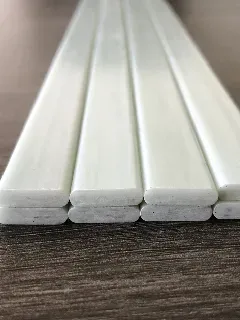loading...
- No. 9, Xingyuan South Street, Dongwaihuan Road, Zaoqiang County, Hengshui, Hebei, China
- admin@zjcomposites.com
- +86 15097380338
- Welcome to visit our website!
FRP Solar Structures for Enhanced Renewable Energy Solutions and Applications
The Innovative Role of FRP Solar Structures in Renewable Energy
In recent years, the global focus on renewable energy has underscored the need for sustainable solutions that optimize efficiency and durability. Among these solutions, Fiber Reinforced Polymer (FRP) solar structures have emerged as a revolutionary technology that enhances the performance and longevity of solar energy systems. This article delves into the significance of FRP in solar structures, exploring its benefits, applications, and future potential.
Understanding FRP Technology
FRP is a composite material made from a polymer matrix reinforced with fibers, commonly glass, carbon, or aramid. This combination yields materials that are exceptionally strong, lightweight, and resistant to environmental factors such as corrosion and UV radiation. As the world shifts towards greener energy sources, incorporating FRP in solar energy infrastructure offers promising advantages over traditional materials like steel and aluminum.
Key Benefits of FRP Solar Structures
1. Lightweight Yet Strong One of the primary advantages of FRP is its lightweight nature. Solar panels and their supporting structures are easier to install and transport because of this reduced weight. Furthermore, despite being lightweight, FRP boasts high tensile strength, making it robust enough to withstand harsh environmental conditions including high winds and snow loads.
2. Corrosion Resistance Unlike metal structures, which are prone to rust and deterioration due to exposure to moisture, FRP structures remain unaffected by water, chemicals, and UV radiation. This resistance significantly extends the lifespan of solar installations, reducing maintenance costs and enhancing overall reliability.
3. Design Flexibility The versatility of FRP allows for innovative designs that can adapt to various solar panel configurations and mounting systems. This flexibility permits the optimization of solar energy harvesting based on specific geographic and environmental conditions.
4. Eco-Friendly As a composite material, FRP can be manufactured using sustainable practices. Furthermore, its long lifespan means that fewer resources are required for replacements, making it an environmentally friendly choice in renewable energy applications.
frp solar structure

Applications in Solar Energy
FRP is being increasingly utilized in various components of solar energy systems. These include
- Mounting Structures Lightweight FRP frames are designed to securely hold solar panels in place while reducing the overall load on rooftops and other mounting surfaces. - Tracking Devices Advanced solar tracking systems that follow the sun’s path for optimal energy capture can significantly benefit from FRP’s lightweight and durable properties, improving their efficiency and lifespan. - Rooftop Installations Given its resistance to corrosion and weather, FRP is particularly suitable for rooftop solar applications, especially in coastal or industrial environments prone to harsh conditions.
Future Potential and Challenges
The future of FRP solar structures appears promising, especially as innovation continues to drive down costs and enhance material performance. As governments and organizations increasingly invest in renewable energy infrastructure, integrating FRP technology could play a critical role in meeting global energy demands sustainably.
However, challenges remain. The cost of production for FRP materials can be higher than traditional materials, which may hinder widespread adoption. Additionally, more research is needed to explore long-term performance and recyclability of FRP structures, ensuring they align with sustainable development goals.
Conclusion
In conclusion, FRP solar structures represent a significant advancement in renewable energy technology. Their lightweight yet robust characteristics, combined with excellent corrosion resistance and design flexibility, make them an ideal choice for modern solar energy applications. As the world continues to push for greener solutions, the integration of FRP in solar infrastructure could pave the way for a more sustainable future, ensuring that the transition to renewable energy is both efficient and long-lasting. The ongoing collaboration between material scientists and renewable energy experts will be vital in overcoming current challenges and unlocking the full potential of FRP in the solar industry.
-
The Rise of FRP Profiles: Strong, Lightweight, and Built to LastNewsJul.14,2025
-
SMC Panel Tanks: A Modern Water Storage Solution for All EnvironmentsNewsJul.14,2025
-
GRP Grating: A Modern Solution for Safe and Durable Access SystemsNewsJul.14,2025
-
Galvanized Steel Water Tanks: Durable, Reliable, and Ready for UseNewsJul.14,2025
-
FRP Mini Mesh Grating: The Safer, Smarter Flooring SolutionNewsJul.14,2025
-
Exploring FRP Vessels: Durable Solutions for Modern Fluid HandlingNewsJul.14,2025
-
GRP Structures: The Future of Lightweight, High-Performance EngineeringNewsJun.20,2025
